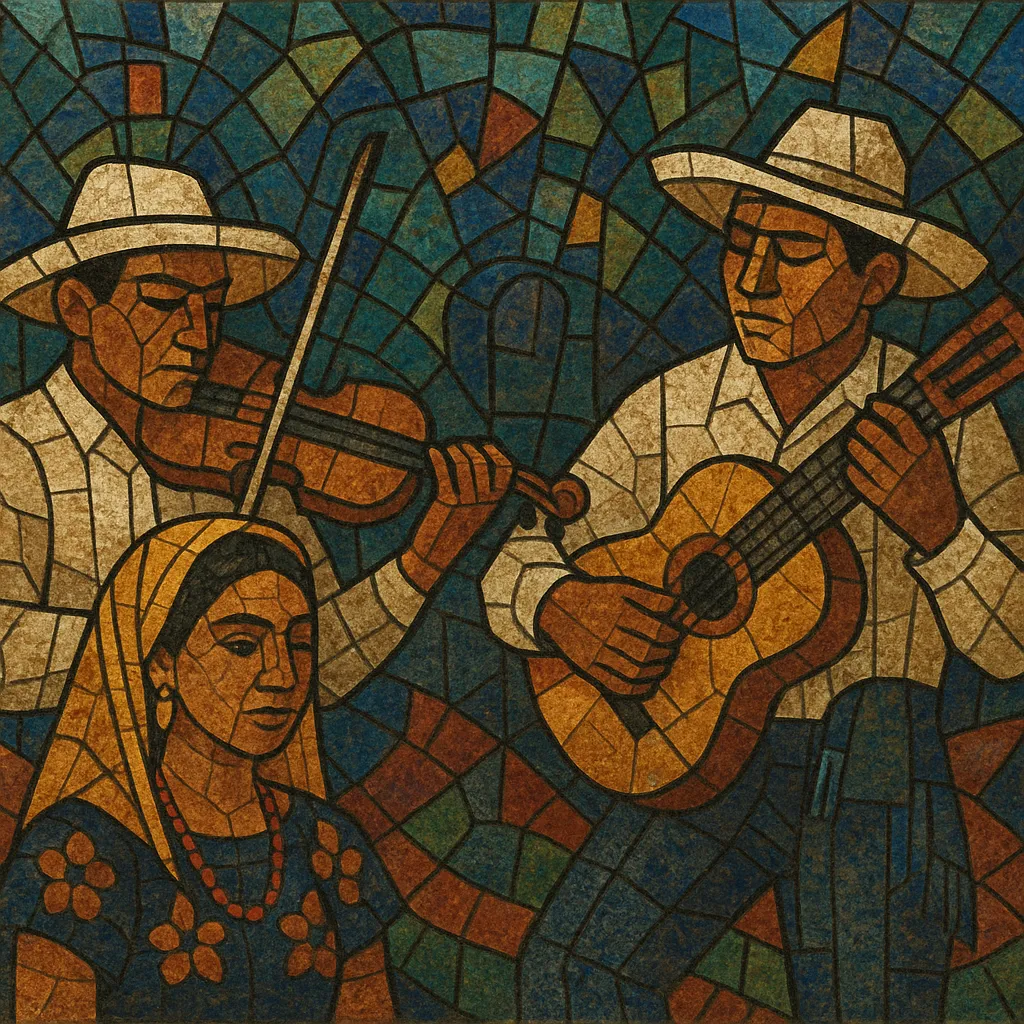Son istmeño is a traditional song-and-dance style from the Isthmus of Tehuantepec in Oaxaca, Mexico. It blends Iberian harmonic song forms and dances with Indigenous (particularly Zapotec/Diidxazá) melodic turns, language, and community ritual practices.
Characterized by lilting, danceable meters that often oscillate between 6/8 and 3/4 (sesquialtera), son istmeño is performed either by small string ensembles (guitar, requinto, violin, sometimes harp or marimba) or by Oaxacan wind bands rich in clarinets and saxophones for community fiestas called velas. Its repertoire includes emblematic pieces such as La Sandunga, La Martiniana, and Naila, with lyrics that alternate between Spanish and Zapotec and themes of love, identity, and local pride.
Harmonically it is rooted in functional tonality (I–IV–V with occasional secondary dominants), supports memorable folk-like melodies frequently sung in parallel thirds, and features call-and-response refrains suited to participatory dancing.
Son istmeño crystallized in the mid-1800s in the Isthmus of Tehuantepec as local communities adapted Iberian dance-song forms (fandango, waltz, polka) and salon repertoires then circulating in Mexico. Musicians folded these into Indigenous Zapotec expressive practices, languages, and communal festivities. The widely beloved La Sandunga, whose modern form dates to the mid-19th century, became an emblem of the region and a touchstone for the style.
Through the early 1900s, son istmeño repertoires spread via regional wind bands (bandas de viento) and traveling string groups that performed for velas (major community celebrations). Composers and poet-songwriters enriched the corpus with new texts and melodies, while existing tunes accrued variants in both Spanish and Zapotec (Diidxazá).
From the 1930s–1950s, radio and recording brought son istmeño beyond Oaxaca. Songs such as Naila and La Martiniana entered the repertoires of bolero trios, ranchera singers, and urban ensembles, helping to place Oaxacan idioms inside a broader Mexican songbook without losing the genre’s regional identity.
Today, son istmeño thrives in both traditional contexts—string ensembles and bandas for community dances—and on concert stages and recordings by Oaxacan and Mexican artists who foreground Zapotec language and identity. Modern arrangements may feature marimba or expanded wind sections while preserving the core sesquialtera feel, strophic poetry, and participatory call-and-response that define the genre.


